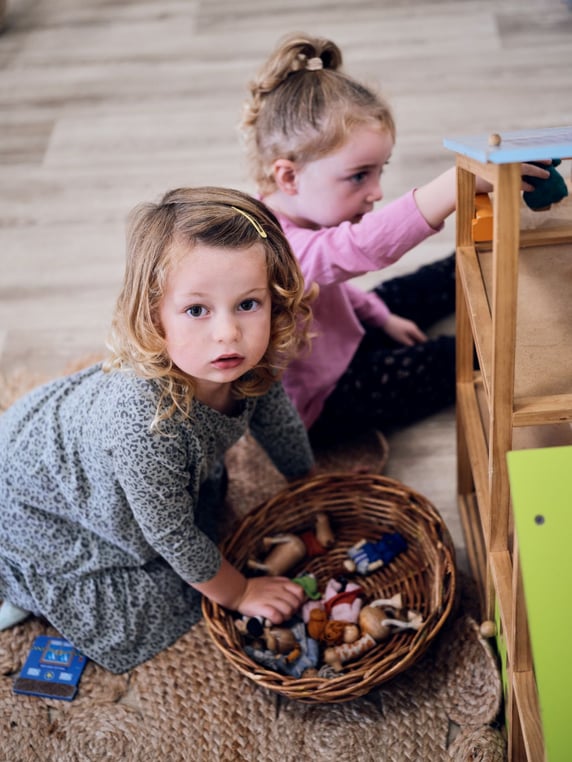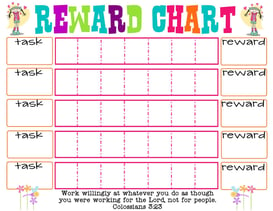Key Points
-
Understanding the reasons behind challenging behaviour and how to manage it can help the child and their parent/educator. By understanding why they are behaving in a certain way, you can possibly put steps in place to prevent the behaviour in the future
-
Positive reinforcement brings the focus to your child’s positive behaviours rather than the challenging behaviours they’re exhibiting.
-
Negative discipline can be quite harmful to children, both physically and psychologically. It can affect a child’s self-esteem and create an environment of fear rather than strengthening their relationships.
-
In some cases, behavioural challenges can be more serious and caused by an underlying issue. In these cases, it’s important to seek help through your GP.
On this page
What is challenging behaviour in young children?
What causes challenging behaviour?
How to approach child behaviour management
Why you should avoid negative discipline
Supporting and guiding your child's behaviour
Challenging Behaviour in Children
Despite their size, children are complex little beings. They are discovering the world around them and feeling all the emotions as they go. It’s completely normal for them to express those emotions in a range of different ways and to even lose control of them at times.
The challenge for parents and educators is the behaviour that can appear as a result, such as hitting, defiance, yelling or being destructive.
According to Piaget’s Theory, children learn by observing and interacting with the world around them. It can be messy and unpleasant but it’s important to remember that we aren’t born with the full suite of tools we need to regulate our emotions. Even as adults, we can all have our moments.
With some patience, understanding and some proven strategies, you can manage your child’s challenging behaviour and give them the tools they need to self-regulate.
What Is Challenging Behaviour in Young Children?
For some parents, difficult behaviour is their child having a tantrum when they ask them to do something. For others, it’s more serious aggression that puts those around them at risk.
For some children, difficult behaviour pops up when they’re tired or unwell. For others, it can be caused by a big life change or something more serious.
Whatever the case, understanding the reasons behind the behaviour and how to manage it can help the child and their parent/educator.
By understanding why they are behaving in a certain way, you can possibly put steps in place to prevent the behaviour in the future.
How to Identify Challenging Behaviour
It can be hard to know what’s classed as “normal” behaviour and what errs on the side of challenging. Generally, challenging or inappropriate behaviour might include things like:
- Having frequent or long-lasting tantrums.
- Getting frustrated easily and reacting in an unexpectedly strong way.
- Responding to discipline in a detached way.
- Responding to requests with defiance.
- Refusing to eat particular foods or participate in family activities.
- Reacting angrily when they don’t get their way.
- Playing inappropriately with their peers.
- Injuring or hurting themselves when they are upset.
- Acting out aggressively.
- Communicating by yelling or throwing objects when they are upset.
The Importance of Paying Attention to Challenging Behaviour
Kids will be kids right? They act out and it’s all part of learning about themselves and the world. Yes and no.
When a child’s behaviour starts to affect things like their health or safety, it’s important that the adults in their life pay attention. A child’s behaviour, particularly when it’s challenging, can start to have serious consequences. These may include:
- Injuries if the child displays aggressive behaviour such as hitting or throwing.
- Accidents that may involve other children, parents, carers or educators.
- Social challenges such as isolation or difficulty with managing the transition from preschool to big school.
- Health issues such as dietary deficiencies when the child’s behaviour includes not eating particular foods.

What Causes Challenging Behaviour?
At its most basic level, difficult behaviour is caused by a lack of social or emotional skills to respond to situations or behave in certain ways. It’s not because a child is “naughty” or they want to cause trouble.
Effectively managing a child’s behaviour relies on understanding the cause. Are they acting out because they're hungry? Is their lack of sleep last night causing their frustration? Or is there some other underlying cause or condition that could be the culprit?
Some of the causes of this type of behaviour are developmental or internal to your child. Others are environmental or related to family life. Often it might not just be one thing causing the behaviour but rather a combination of things.
Causes of challenging or inappropriate behaviour may include:
- Lack of sleep
- Hunger
- Illness
- Life transitions or changes in family circumstances (such as parents getting divorced or moving to a new home)
- Mental health or medical issues
- Emotional or physical trauma
Sometimes a tired child will behave completely “normally”. Other times there will be a trigger of sorts that wnaging a child’s behaviour isn’t always easy. There are days when you’re tired or busy or feeling unill result in a more challenging response. It’s important to understand that context can also play a role in how a child responds to a situation.
How to Approach Child Behavior Management

Managing a child’s behaviour isn’t always easy. There are days when you’re tired or busy or feeling unwell yourself and you don’t have the same bandwidth as you normally do to respond in a positive way.
However, it’s really important that you have a behaviour management plan or strategies in place to handle behaviour as it arises.
Early Years Behaviour Management Strategies
So what can you do to prevent or discourage these challenging behaviours? A positive and constructive approach will get the best results.
This style of approach where you create a positive environment for learning helps to equip children with the skills they need to behave in more appropriate ways.
Positive encouragement
Positive reinforcement brings the focus to your child’s positive behaviours rather than the challenging behaviours they’re exhibiting.
Why is this a good thing? If they are behaving inappropriately for attention, by praising their positive behaviours you can encourage more of the same.
Positive encouragement can be as simple as calling out positive behaviour when you see it. For example, if your child packs away their toys after they’ve finished playing with them, tell them that they’re doing a great job.

If you prefer a more structured approach, you can use a reward chat to incentivise positive behaviour.
Some children will respond really well to the visual nature of a reward chart while for others verbal praise is enough.
Setting boundaries
Boundaries and rules are a great way to proactively manage behaviour so children know exactly what is expected of them.
There are two things you need to be aware of in setting boundaries.
The first is communicating the rules or boundaries to the child. Younger children may need reminders of what the rules are but over time they will become more familiar with them.
The second is involving the child in making the rules, depending on how old they are. For young children, you could give them a choice. For example, ask them if they want to choose their own clothes or if they want you to choose for them.
As long as boundaries are consistent, positive and clear, they are a very effective behaviour management strategy.
Consequences
Rules and boundaries are one thing but when the rules are broken, there should be consequences in place.
Your child should know what the consequence of a particular behaviour is so that’s it not a surprise to them. The consequence should also be appropriate to their age and not cause them any distress, such as time out in a dark room.
Consequences are also time-sensitive and should be immediate when the behaviour occurs.
Activities That Can Help to Improve Difficult Behaviour
It’s refreshing to know that, for many young children, difficult behaviour gradually diminishes over time. Particularly when you use positive reinforcement, set boundaries and follow through with consequences.
There are some other activities you can do to help improve behaviour over time. These include:
- Role model the behaviour you want to see in your child.
- Offering them choices to give them some control within set boundaries.
- Role-playing situations to help teach them how they should behave.
- Providing step-by-step instructions and clear guidance so they understand the expectations.
- Taking time out from a situation to interrupt the behaviour and reset.
Why You Should Avoid Negative Discipline
Where a positive approach to discipline helps to teach children appropriate behaviour, a negative approach to behaviour management only stops behaviour in the moment. It doesn’t give them the skills they need.
More than that, negative methods can be quite harmful to children, both physically and psychologically. It can affect a child’s self-esteem and create an environment of fear rather than strengthening their relationships.
Physical discipline
Smacking, hitting, slapping or pinching are all types of physical discipline.
While physical discipline might stop the behaviour in the moment, in the long term it can have damaging consequences. Children who are physically disciplined may be more aggressive and think that violence is acceptable. It can also lead to low self-esteem or other mental health issues. Not to mention causing physical pain.
Shouting
While shouting doesn’t harm a child physically, it can have similar psychological consequences.
It won’t help you to achieve the desired behaviour you’re looking for from your child. You’re not role modelling how to deal with your frustrations and your child might even be scared of you.
Isolation
Isolation can happen in a couple of forms. It can be time out, where a child is left alone for a period of time, even while they are visibly distressed. It can also be a more emotional type of isolation where a parent or other caregivers withdraw emotionally from the child.
Children can perceive this as rejection.
Time-out may be effective in particular situations but it should be used carefully and sparingly.
Supporting and guiding your child’s behaviour
Any parent or early childhood educator knows that you can’t expect good behaviour at all times. It’s normal for children to act out at different ages.
That may not help in the heat of the moment when you’re staring down a stubborn and defiant toddler. But it does help to know that in the long run, with positive intervention and support, you can guide your child to a good outcome.
In some cases, behavioural challenges can be more serious and caused by an underlying issue. In these cases, it’s important to seek help through your GP or other healthcare provider.
At Gowrie NSW our educators are qualified and experienced to support you and your family with any behaviour management issues you are facing. We value the unique personality that every child brings to the world and work with families to foster a love of learning and discovery.
Find your nearest Gowrie NSW Early Education and Care Centre to find a warm and welcoming space for your child.




.jpg)

